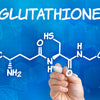“Squash” heart disease, diabetes and cataracts with THIS fall favorite

As the days shorten, many cooks turn to squash to brighten up a fall menu. Brightly colored squashes and gourds not only make attractive seasonal centerpieces - but can be used to create tasty, filling, and nutritious side dishes, soups, and entrees. (What could be more satisfying and cheerful than a rich, golden soup made from creamy butternut squash and seasoned with a dash of nutmeg?)
Squashes with yellow or orange flesh – such as butternut, crookneck, and acorn squashes – contain high levels of disease-fighting plant pigments known as carotenoids and are believed to provide maximum health benefit. This select group also includes pumpkins, which are technically a type of squash. In fact, squashes and pumpkins have a long history of being employed by natural healers to address diabetes, high blood pressure, vision problems, and high cholesterol – with scientific research supporting this ancient wisdom.
Let's look at some of the health benefits of these colorful autumn delicacies.
It's official: lutein and zeaxanthin in squash protect against cataracts and macular degeneration
Studies support the ability of lutein and zeaxanthin, a pair of powerful antioxidant carotenoids in squash, to help prevent age-related macular degeneration or AMD. According to the U.S. Centers for Disease Control and Prevention, AMD is the leading cause of blindness in people over 65. Lutein and zeaxanthin also act against cataracts. A ten-year study involving 35,000 women revealed that those who ate the highest amounts of lutein and zeaxanthin had an 18 percent lower risk of cataracts when compared to those who ate lower amounts.
A specific carotenoid known as beta-carotene plays a part in squash's beneficial effects on eye health as well. Half a cup of butternut squash contains a whopping 4,684 micrograms, which is converted in the liver to vitamin A - which is essential for healthy vision.
Nutrients in squash may reduce the risk of heart attacks and strokes
A cup of cooked butternut squash contributes 582 mg of potassium, allowing it to provide a significant portion of the day's recommended dietary allowance of this essential mineral. While The American Heart Association recommends getting 4700 mg of potassium every day, surveys reveal that fewer than 2 percent of American adults achieve this goal. In addition, studies have shown that potassium is essential for blood pressure regulation and can even lower elevated blood pressure – a substantial risk for heart disease.
And, squash's cardioprotective effects don't end with its potassium content. Squash is fiber-rich, which can help lower harmful LDL cholesterol. Squash is also a good source of vitamin C - which helps produce collagen needed for healthy skin and flexible arteries – and it contains the B vitamin folate, which may protect against strokes. In addition, a one-cup serving of acorn squash contains over a quarter of the RDA for magnesium, another mineral essential for stable blood pressure and heartbeat. Magnesium can also help reduce elevated triglycerides (fats in the blood), a risk factor for heart disease.
Given the heart-healthy properties of squash, it's not surprising that researchers report that a high intake of squash and other carotenoid-rich vegetables is associated with a reduced risk of death from stroke and heart disease.
With a low glycemic index, squash can help stabilize blood sugar
Squash, which contains insoluble fibers known as polysaccharides, can help prevent blood sugar from rising after eating. Scientists say that pumpkin, in particular, may prevent blood sugar "spikes," boost insulin sensitivity and increase insulin production – all potentially helpful in warding off type 2 diabetes. With each cup of cooked squash containing a hefty 6.6 grams of fiber (and a reasonable 82 calories), members of the squash family may even combat obesity, a risk factor for diabetes.
In addition, fiber can create a sense of fullness or satiety, leading to decreased appetite and food consumption later in the day.
Squash is endlessly versatile in recipes and confections
Prepare squash by roasting, baking, boiling, steaming, or grilling.
Roasting squash is as easy as rinsing it, cutting it in half, drizzling halves with olive oil, and seasoning with herbs and spices such as basil, thyme, black pepper, paprika, cinnamon, sage, ginger, or sea salt. Roast with cut side down on a baking sheet for 45 to 60 minutes at 400 degrees, or until the skin can be easily pierced with a fork.
You can remove the center seeds with a spoon – but natural health experts warn: don't even think of letting them go to waste. For a snack packed with protein, magnesium, zinc, and iron rinse the seeds, sprinkle with olive oil, chili powder, or sea salt, toast at 350 degrees until crispy, and enjoy.
Top roasted squash with yogurt or tahini, and sprinkle with chopped cashews, almonds, walnuts, or pecans.
Alternately, squash and pumpkin can be prepared stuffed with quinoa, brown rice, or bulgur wheat, with the shells serving as bowls. And one can never overstate the lusciousness of seasonal pumpkin pie. Tip - for cooking purposes, the smaller "sugar pumpkins" are preferable to the larger, less flavorful carving pumpkins.
Squash is not only beautiful to look at and tasty to consume, but it can be a powerful ally against chronic degenerative disease. So adding some squash to your healthy diet is a wise way to welcome fall.
Sources for this article include:






